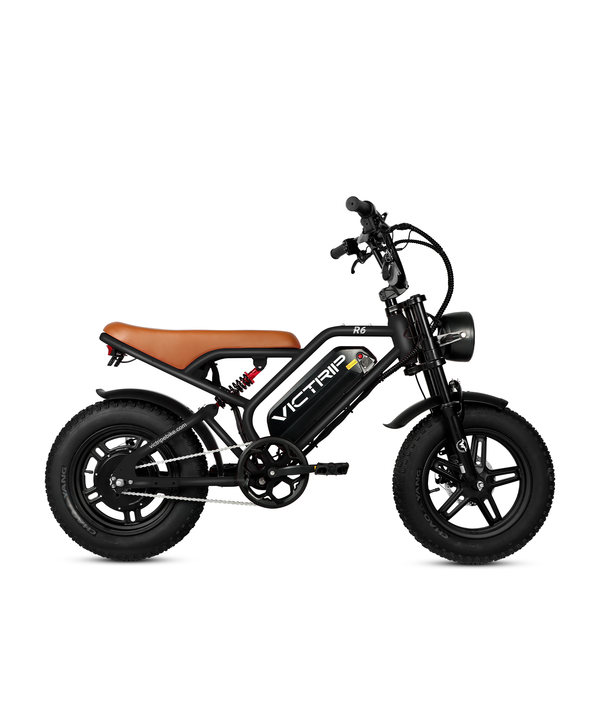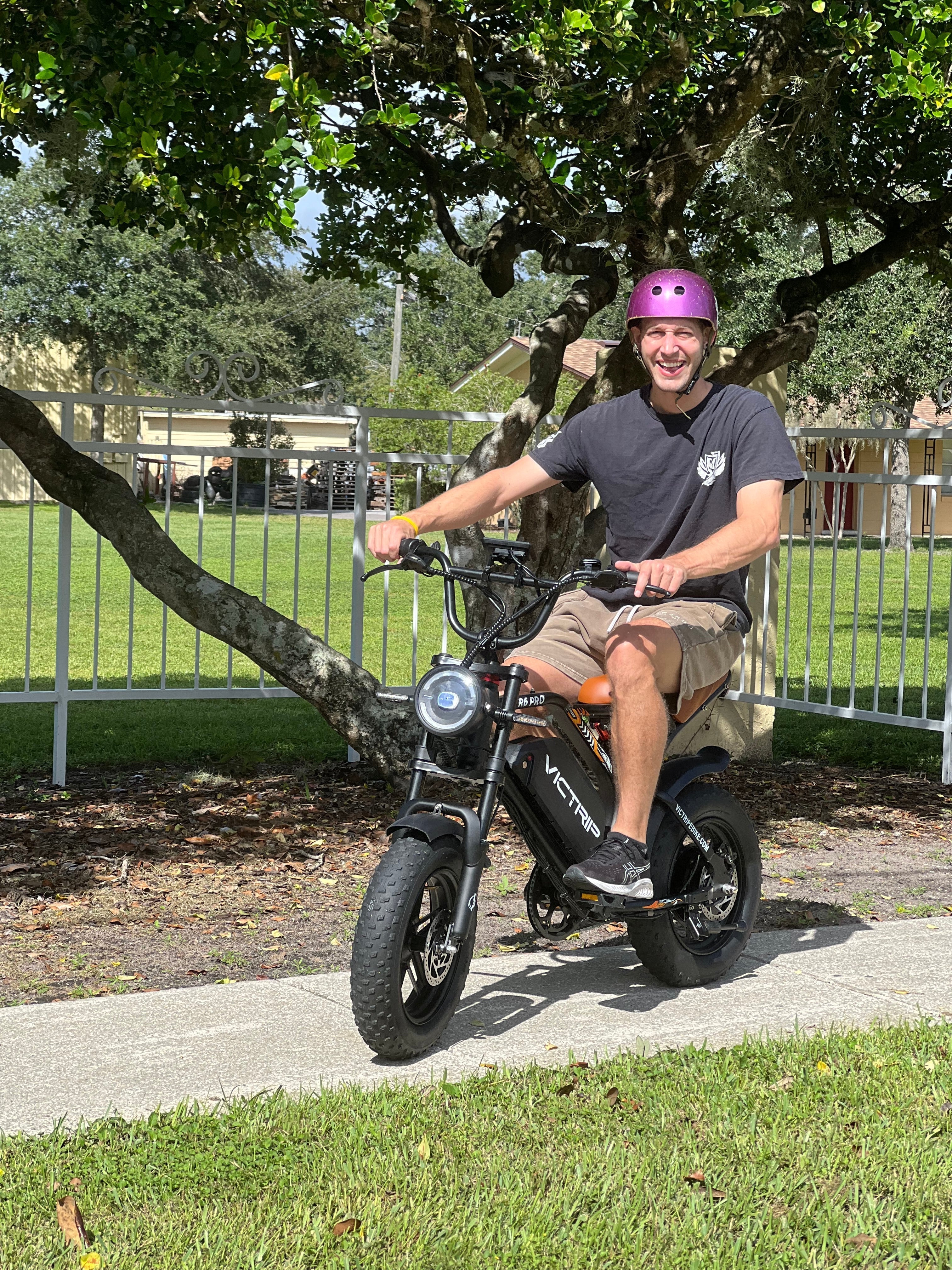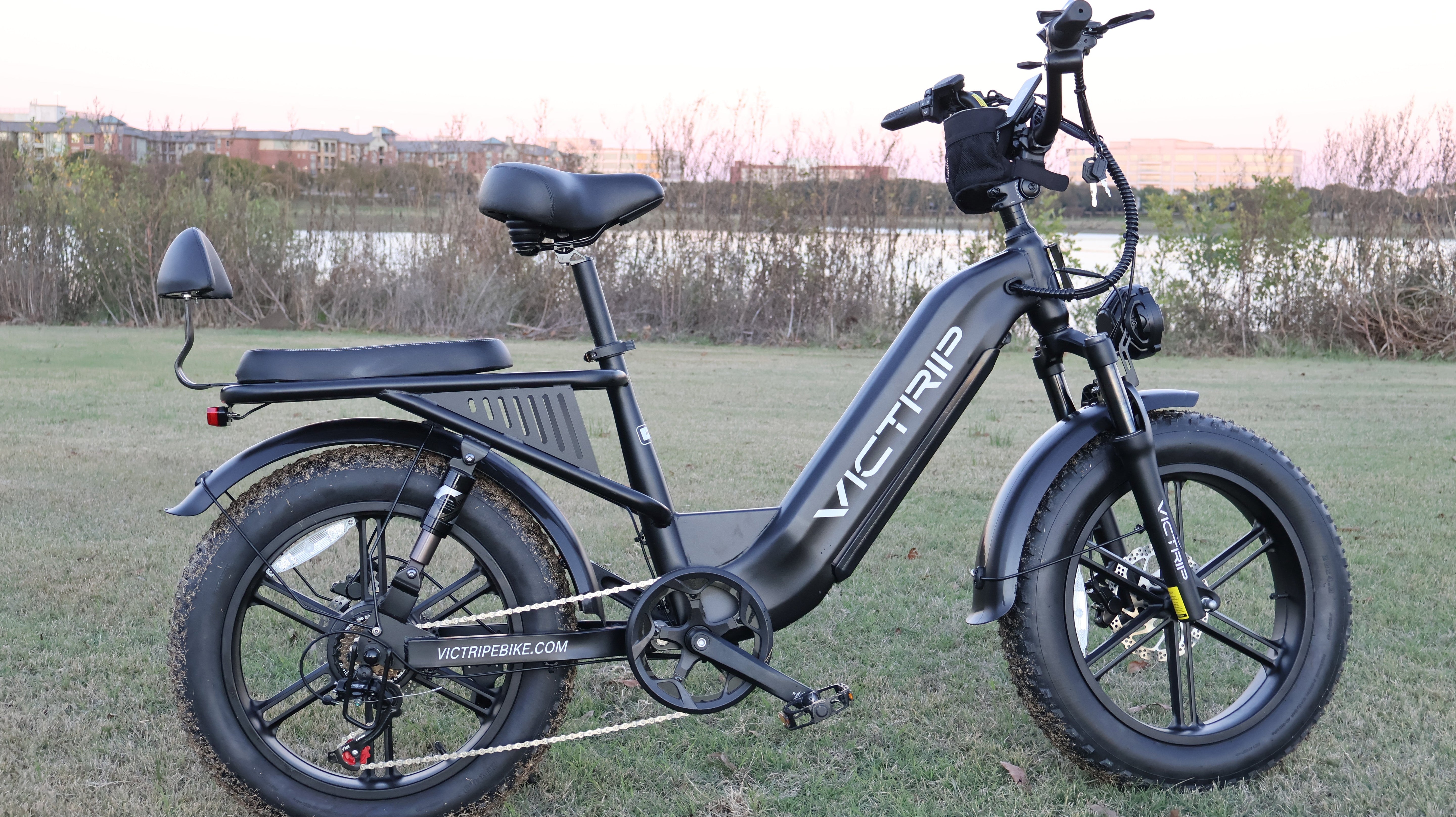
Electric bikes (e-bikes) have grown from niche commuter tools into mainstream transportation in the United States. In 2025, cities from Los Angeles to New York are seeing e-bikes used for commuting, delivery services, fitness, and even eco-friendly tourism. Their popularity has skyrocketed because they blend the speed of a small vehicle with the freedom of a bicycle.
Yet, with popularity comes confusion. Many riders ask: “Do I need a driver’s license to ride an e-bike in the U.S.?” The answer isn’t always simple. Licensing requirements vary widely across states, and while federal law sets a baseline definition of what counts as an e-bike, states hold the power to regulate age limits, helmets, licensing, and where e-bikes can be used.
This guide breaks down every essential detail: federal guidelines, the three-class system, state-by-state laws, licensing and insurance requirements, and what the future of e-bike regulation might look like. By the end, you’ll know exactly whether you need a license—or not—in your state in 2025.
Do You Need a Driver’s License for an E-Bike?
The core question many riders ask: “Is a license legally required for e-bike use in 2025?”
Federal Law vs. State Law
-
Federal law does NOT require a driver’s license for e-bike riders.
-
However, states have the final authority to decide licensing requirements.
This means in one state, you may ride freely without a license, while in another, you may be treated more like a scooter or moped rider.
States That Require a License
As of 2025, a small number of states still classify certain e-bikes (often faster Class 3 or high-powered ones) as mopeds or motor-driven cycles. In these states, a license (or at least a learner’s permit) may be required. Examples include:
-
Alabama – Requires a license for all motor-driven cycles, including many e-bikes.
-
North Carolina – Treats some faster e-bikes like mopeds.
-
Alaska – Licensing rules depend on motor wattage and speed capacity.
States That Do Not Require a License
The majority of states, including California, New York, Texas, Florida, and Washington, do not require a driver’s license for standard Class 1, 2, or 3 e-bikes. Riders can operate them like traditional bicycles, subject to helmet and age laws.
That said, states update regulations frequently, so always check your local Department of Motor Vehicles (DMV) website for the latest details.
State-by-State E-Bike Licensing Rules in 2025
Since U.S. laws vary significantly, here’s a regional breakdown of where licenses are (and aren’t) required.
Western States Overview
-
California: No license required for Class 1–3 e-bikes. Helmets mandatory for riders under 18 and all Class 3 users.
-
Oregon: No license required; minimum age of 16 for Class 3.
-
Nevada: No license required, but riders under 17 must wear helmets.
-
Alaska: Licensing may apply depending on power output.
Midwestern States Overview
-
Illinois: No license required for Class 1–3.
-
Minnesota: No license required; Class 3 restricted to 15+ years.
-
Ohio: E-bikes excluded from motor vehicle licensing.
-
Michigan: No license required; Class 3 limited to roadways.
Southern States Overview
-
Texas: No license required, but some local restrictions exist.
-
Florida: No license required for Class 1–3; helmets required under 16.
-
Alabama: License required for many e-bikes, treated as motor-driven cycles.
-
Georgia: No license required for Class 1–3.
Northeastern States Overview
-
New York: No license required for Class 1–3; Class 3 restricted to 16+.
-
New Jersey: Class 1–2 do not require licenses; mopeds do.
-
Massachusetts: Treated as bicycles; no license required.
-
Connecticut: No license required; helmet law enforced for minors.
Do You Need Registration or Insurance for an E-Bike?
On the federal level, low-speed e-bikes that meet the CPSC definition (motor under 750 W and top electric-only speed under 20 mph) are treated as bicycles for consumer product regulation — not motor vehicles — so federal rules don’t impose registration or insurance requirements.
But states can — and sometimes do — set different requirements. The typical patterns you’ll see in 2025 are:
-
Most states do not require registration or license plates for Class 1 and Class 2 e-bikes, and generally treat them like conventional bicycles for registration and financial-responsibility (insurance) rules. PeopleForBikes maintains a state-by-state database that shows the variety of state approaches.
-
Some states treat higher-speed or higher-power e-bikes as mopeds or motor vehicles, which can trigger registration, plates, and insurance requirements. Where that’s true, riders may also need a driver’s or motorcycle license. Examples often cited in 2024–2025 coverage include Alaska and a few localities considering new registration rules. Always check your state’s DMV.
Practical guidance:
-
If your e-bike is stock and fits the CPSC/three-class profile, you’ll very likely not need registration or insurance in most states.
-
If your e-bike exceeds speed/power thresholds, or you’ve modified it to do so, treat it like a motor vehicle until you confirm otherwise — that means talking to your state DMV or local authority about plates and insurance.
E-Bike Speed and Power Regulations
Speed and motor power are the single most important technical factors determining legal status:
-
Federal baseline: the CPSC’s low-speed e-bike definition uses < 750 W motor and < 20 mph motor-only speed as the threshold. Bikes beyond that are more likely to be classified as mopeds/motor vehicles.
-
Three-class system (widely adopted by states):
-
Class 1: Pedal-assist only, assists up to 20 mph.
-
Class 2: Throttle-assist, motor assists up to 20 mph.
-
Class 3: Pedal-assist only, assists up to 28 mph (often subject to age/helmet restrictions).
-
-
Why it matters: Many state rules hinge on whether the bike is Class 1/2 (typically regulated like a bike) or Class 3 / higher-power (sometimes treated more like a motor vehicle). A 28 mph Class 3 e-bike may be allowed on roads but restricted from certain bike paths and may carry age/helmet rules.
Tip: If you buy an e-bike that’s advertised with speeds above the three-class limits (or aftermarket “tuning” to increase speed), assume it could be classified as a motor vehicle in some jurisdictions. That could mean plates, insurance, and a license.
Age Restrictions and Helmet Laws
Age and helmet rules vary considerably across states and often differ by e-bike class:
-
Minimum ages: Many states set minimum ages for Class 3 bikes (commonly 16 or older), while Class 1 and 2 are often allowed for younger riders. Check local rules if a teen will ride.
-
Helmet requirements: Helmet laws are common for minors and increasingly for Class 3 riders of any age. For example, California requires helmets for all Class 3 riders and for riders under 18 on any e-bike. Other states require helmets only for riders under a certain age.
-
Enforcement and local ordinances: Municipalities sometimes add extra restrictions (e.g., age caps for rental e-bikes, local trail bans, or helmet enforcement). That’s why it’s smart to check city ordinances for parks, bike paths, and rental programs.
Practical rule: If a young rider will use your e-bike, require a helmet and confirm local age restrictions — it’s both safer and avoids potential fines.
Read More: Foldable Electric Bike Laws and Regulations by State (USA).
Can You Ride an E-Bike on Roads and Trails Without a License?
Short answer: Usually yes — for Class 1 and Class 2 e-bikes — but it depends.
-
Roads: Most states allow Class 1–2 e-bikes on roads where bicycles are permitted, without a driver’s license. Class 3 e-bikes are commonly allowed on roads but may be restricted from bike lanes or multi-use trails in some places.
-
Trails and multi-use paths: Trail access is patchwork: federal land managers, state parks, and local trail authorities each have their own rules. Many mountain bike trails still prohibit motorized access; some paved rails-to-trails allow Class 1 and sometimes Class 2 but ban Class 3. Always check trail rules before riding off-road.
-
Local restrictions: Cities and counties may restrict e-bike classes on boardwalks, certain bike lanes, or pedestrian zones. When in doubt, look for posted signs and local ordinances.
Do International Travelers Need a License for E-Bikes in the US?
If you’re visiting the U.S. from another country, licensing rules for e-bikes follow the same state laws as for residents:
-
For standard low-speed Class 1 and 2 e-bikes, you typically won’t need a U.S. driver’s license — you’ll be treated like a bicycle rider.
-
If the e-bike is classified locally as a moped or motor vehicle (because it exceeds speed/power limits), you may need a valid driver’s or motorcycle license recognized by the state — check the state DMV before you ride. Some rental providers will refuse bikes that would require a U.S. license.
Tip for travelers: Ask rental shops for the e-bike’s class and whether it requires registration or a license in that state — most reputable rental companies will provide this info up front.
Safety, Responsibility, and Best Practices for Riding
Legalities matter, but safety matters more. Regardless of whether a license is required, follow these best practices:
-
Wear a helmet — it’s the single best protection for serious head injury. For higher-speed Class 3 rides, choose a helmet rated for higher-impact events.
-
Know your bike: Understand where the motor engages (pedal-assist vs throttle) and the bike’s top assisted speed. Avoid modifications that increase speed/power beyond the manufacturer’s specs.
-
Follow traffic laws: Ride with traffic, use hand signals, obey signals/stop signs, and use lights/reflectors at night. Many states require the same equipment on e-bikes as on traditional bikes.
-
Be courteous on shared paths: Reduce speed around pedestrians, announce yourself when passing, and respect trail rules — riders are asking for tighter regulation when e-bikes are used recklessly.
TOP PICK

VICTRIP®R6 Off Road Ebike
Future of E-Bike Regulations Beyond 2025
E-bike regulation remains a dynamic area. Federal agencies (including the CPSC) and state legislatures continue to review and refine rules. In 2024–2025 the trend has been:
-
Standardization push: Advocacy groups aim to expand adoption of the three-class system to simplify rules nationwide.
-
Local tightening in response to safety incidents: Several municipalities and some states are considering or adopting stricter age, helmet, registration, or even licensing rules for higher-speed e-bikes after high-profile crashes. Expect more local ordinances in 2025 and beyond.
-
Possible federal clarifications: The federal register shows the CPSC investigating e-bike rulemaking; while that doesn’t equal immediate rule changes, it signals regulators are paying attention and changes could follow in coming years.
Bottom line: stay informed — what’s allowed where you live in 2025 may change over the next few years.
Conclusion
E-bikes have made cycling more accessible and efficient, but legal treatment depends heavily on power, speed, and location. In 2025:
-
The CPSC federal baseline defines low-speed e-bikes (<750 W, <20 mph electric-only) as bicycles.
-
Most states treat Class 1 and 2 bikes like conventional bicycles (no license/registration), though Class 3 and modified bikes draw stricter rules in many places.
-
Because laws are evolving, verify your state and local rules before you ride, especially if you have a higher-speed bike or plan to ride on trails and in cities. Use PeopleForBikes and your state DMV as starting points.
Ride safely — and when in doubt, treat a powerful e-bike like a motor vehicle until you confirm otherwise.
FAQs
Do I need a driver’s license to ride any e-bike in the U.S.?
No — for most low-speed e-bikes (Class 1 and 2 that meet the CPSC definition), you don’t need a driver’s license. But some states treat high-speed or high-power e-bikes like mopeds or motor vehicles, which can require licenses. Always confirm with your state DMV.
Are Class 3 e-bikes legal without a license?
Often yes, but Class 3 bikes face more rules: minimum ages, helmet mandates, and possible lane restrictions. In a handful of states some Class 3 or modified bikes may be reclassified so check local laws.
Do I have to register my e-bike?
Typically no for Class 1 and 2, but if your e-bike is classified as a moped or motor vehicle by your state, registration and plates may be required.
If I modify my e-bike to go faster, does that change its legal status?
Yes. Increasing top speed or motor power can move your e-bike out of the “low-speed” category, exposing you to motor-vehicle rules, registration, licensing, and insurance requirements. Don’t modify without checking local law.
Where can I check the exact law for my state?
Start with PeopleForBikes’ state law pages and your state DMV website for the most accurate, up-to-date info. Links: PeopleForBikes State Laws and your state DMV.




Share:
How to Pick the Perfect E-Bike for Teenagers?
Bike Cargo Trailer for Hunters and Outdoor Enthusiasts